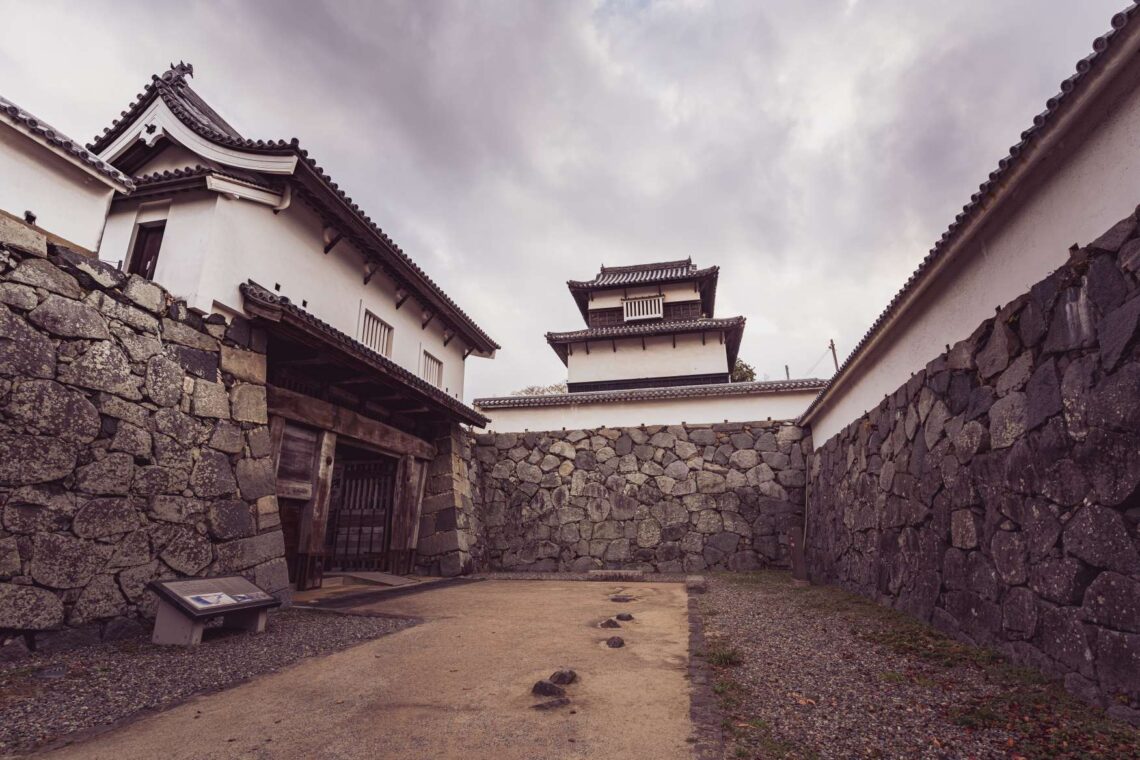
Fukuoka Castle – The Beautiful Castle Ruins Within a City
Did you know the city of Fukuoka (福岡) once had a castle known as Fukuoka Castle (福岡城)? Once considered the largest bastion in Kyushu (九州), today only the ruins of it remained in a park located in the city. So much so that it is called the Fukuoka Castle ruins (福岡城跡/Fukuoka-jo Ato); in which ‘Ato/跡’ here refers to ruins. Despite that, it is a well-known attraction among the locals simply for its atmospheric ruins and peaceful surroundings.
So what makes the castle ruins a unique attraction on its own? Let’s explore the area further to discover it’s beauty:
- Find out more about the history of a castle that was once one of the largest in the country.
- Then, relax by taking a stroll along the Ohori Park; which was once the defensive moats of the castle.
- Head up to the castle complex itself and learn about the little details of each part of the ruins.
- Check out the stunning scenery of the castle grounds during spring and also how to travel to this castle ground here.
Table of Contents
History
Fukuoka Castle was built on the land that was awarded to the Kuroda clan (黒田氏) by none other than Tokugawa Ieyasu (徳川家康), one of the three unifiers of Japan. This award was for the contribution of the Kuroda clan as they sided with the Tokugawa clan (徳川氏) in the famed Battle of Sekigahara (関ヶ原の戦い) to defeat the enemies and even killed a famed general known as Shima Sakon (島左近). For reference, the land at that time was called Chikuzen (筑前) before it was integrated into the present Fukuoka province.
The lord of the Kuroda clan, Kuroda Nagamasa (黒田長政) commenced the construction of Fukuoka castle in AD 1601 as a stronghold and administrative centre. Overseeing the construction at that time was a samurai cum mason known as Noguchi Kazunari (野口一成). He was an expert in utilising stones to construct the walls of the castles; gathering them from various sources such as the clan’s former Najima castle (名島城) and the walls that were used against the Mongol invasions centuries ago.
Eventually the impressive castle was completed in AD 1607; in which another warlord known as Kato Kiyomasa (加藤清正) applauded its architecture and even nicknamed it ‘the Stone Castle (石城/seki-jo)’. On top of that, Noguchi Kazunari was recognised for his impressive work and was eventually sent to work on the Edo Castle (江戸城) as well.
While the castle remained a ruling base for the Kuroda clan, it was unfortunately decommissioned in AD 1871 during the Meiji period (明治時代) when the newly established government decided to abolish the feudal system. Today, only ruins of the castle remain as vestiges of the castle’s former glory.
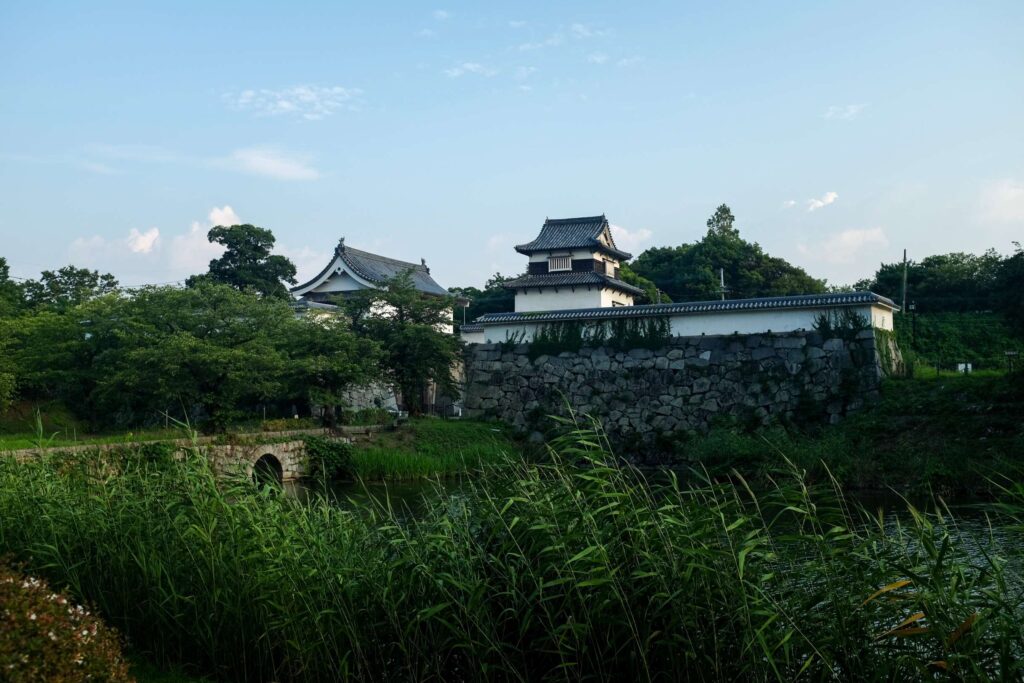
Start with the Nearby Ohori Park
To begin our journey, we first start off by checking out the nearby Ohori Park (pronounced Ōhori-kōen/Oohori-kou-en/大濠公園), a park that was once an integral defence of the castle. The name ‘Ohori’ literally translates as giant moat; as the lake and area here once served as part of the moat system for Fukuoka Castle. Today, the area serves as a leisure spot for families and couples to have their own quiet time. I have been here twice and my personal favourite thing to do is to walk around the huge lake. There is even a Starbucks here where you can grab a cup of coffee and some small bites too.
The environment here is amazingly peaceful and the lack of crowds makes this place a refreshing getaway from the city. Not to mention, the scenery of the lake surrounded by the buildings is stunningly gorgeous, especially even more so on a bright sunny day. Be sure to take your time to cross the Moon-Viewing Bridge (観月橋/Kangetsu-kyo), a beautiful stone bridge that connects to the island in the middle of the lake. Not only do you get to enjoy the gentle breeze and enjoy the mesmerising scenery, but also the chance to capture some captivating wildlife pictures of cranes, ducks and turtles if you are lucky. If you are more interested to explore the park, check out my separate article here to find out more.
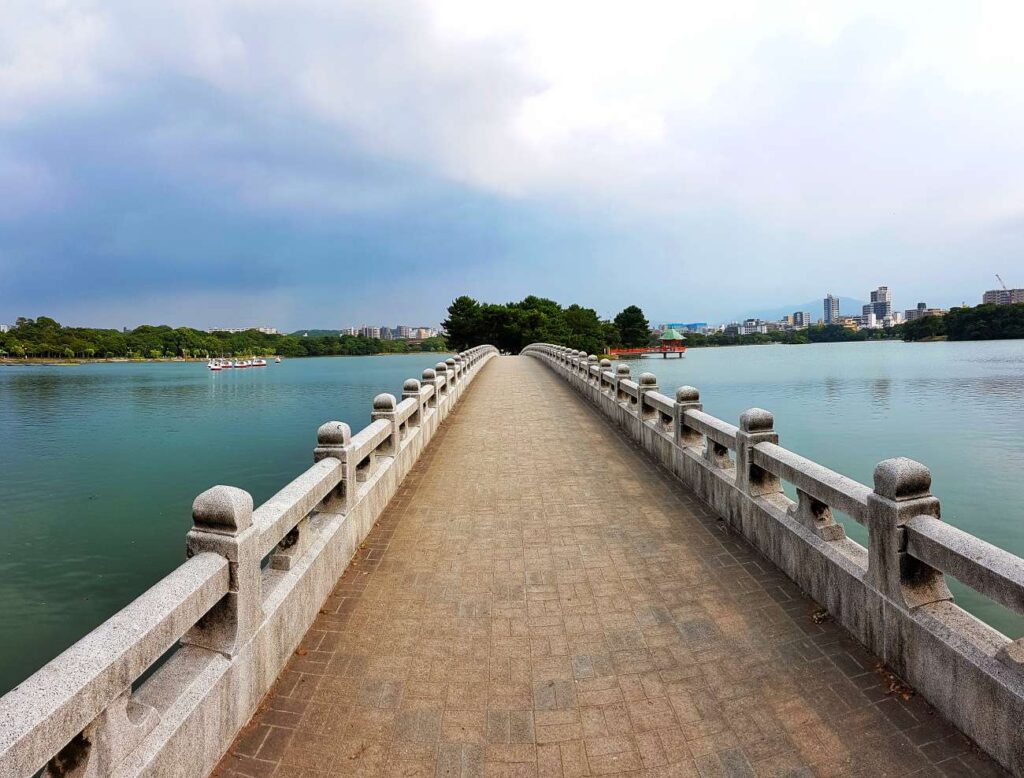
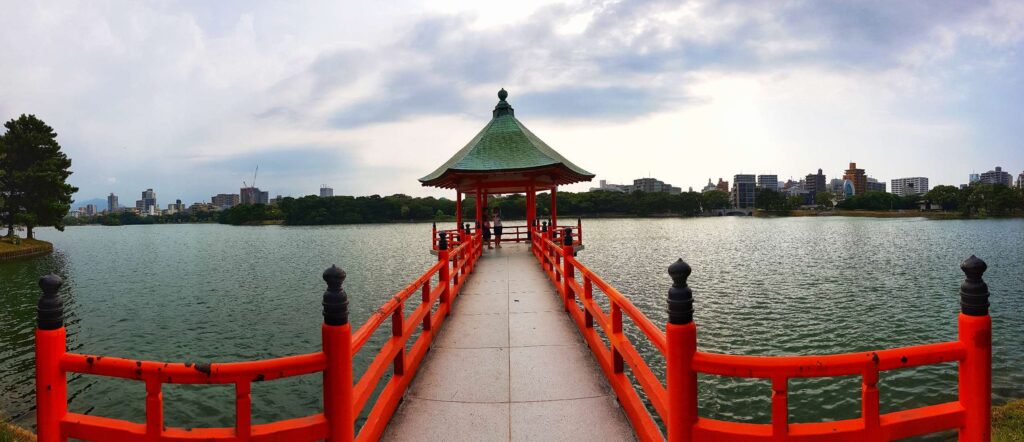
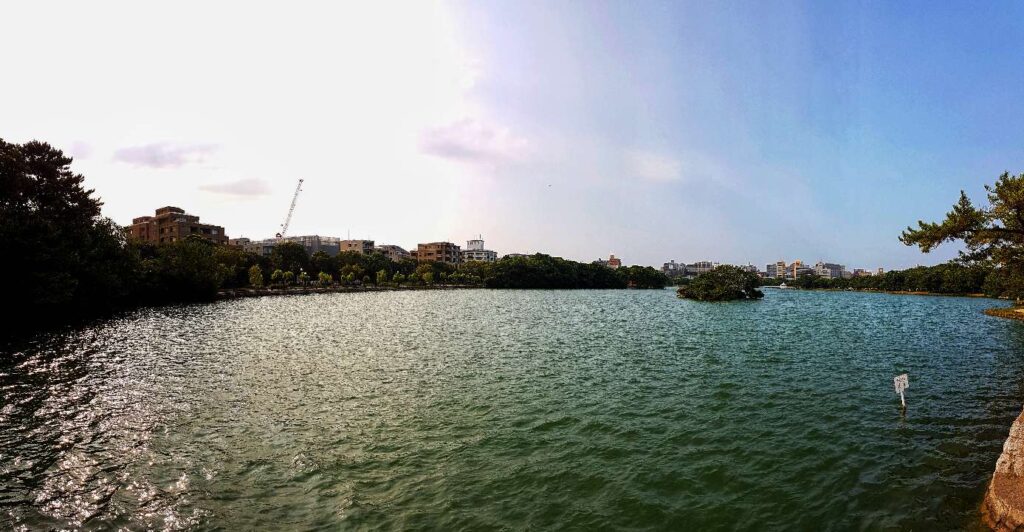
Exploring the Ruins of Fukuoka Castle
Afterwards, we head towards the Maizuru Park (舞鶴公園), adjacent of the Ohori park; whereby the actual castle ruins are located. Exploring the castle ruins itself feels like a stroll in a park; given how bits and pieces of ruins are scattered across the park. As a matter of fact, the ruins here mainly comprise of stone walls, turrets and stone foundations; which reinforces its famed reputation as a once magnificent stone castle.
While the main keep no longer exists, one can imagine the massive size of the citadel simply by taking a stroll across the park. In my opinion, the site is best explored at one’s own leisure, to allow oneself to immerse into the tranquility the park has to offer. Additionally, each part of the ruins represents a part of history of this once mighty citadel. With that in mind, here are some of the notable ruin sites of Fukuoka Castle.
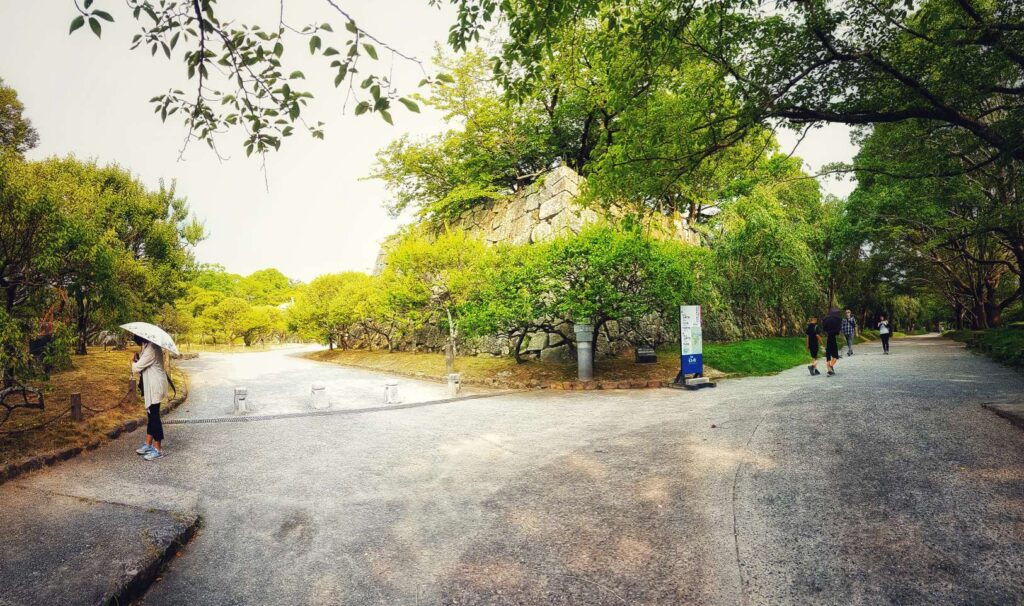
The Entrance Gate Shimonohashi-Gomon
The Shimonohashi-gomon (下之橋御門) is one of the main entrances of the castle and also a Tangible Cultural Property of Fukuoka (Yukei Bunkazai/有形文化財). This gate was built during the Edo period (江戸時代) to enhance the castle’s defense. Take note of the square enclosure right in front of the gate. This is the masugata style (桝形), a design that resembles a masu (桝) or a square measuring box used in to measure rice during feudal Japan.
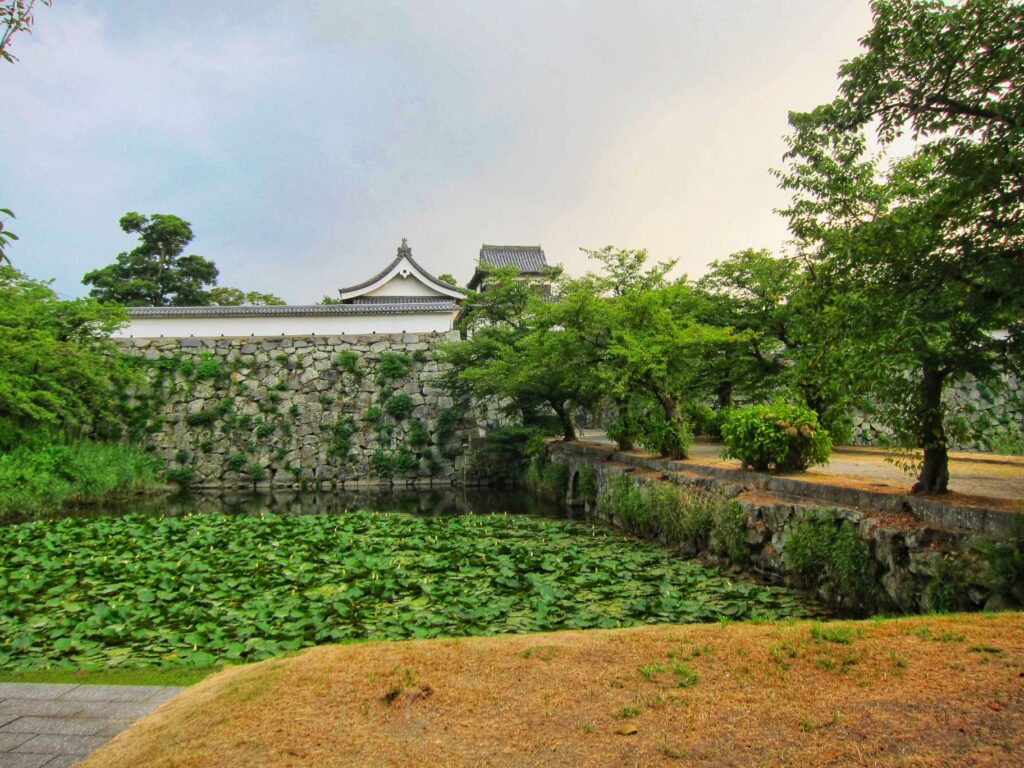
Notice how the entrance is at the side rather than the middle. This mechanism forces the charging invaders to slow down in the square area; whereby defenders could easily fire muskets and arrows at the gathering enemies from the top of the gate. A simple, and also effective defense mechanism which started in Western Japan together with the rise of stone-wall castles.
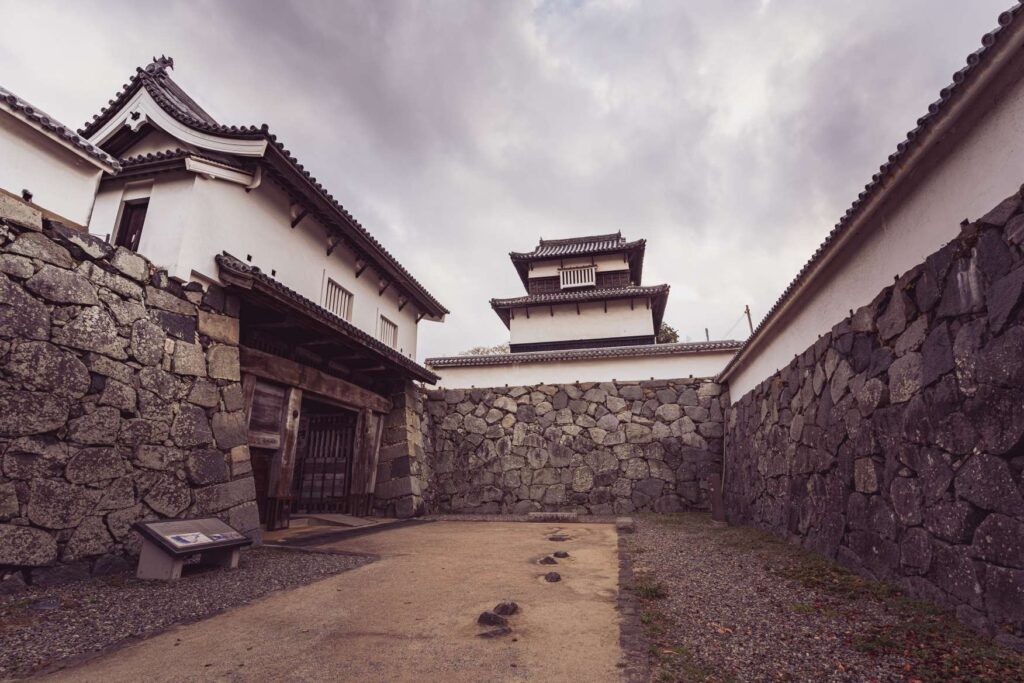
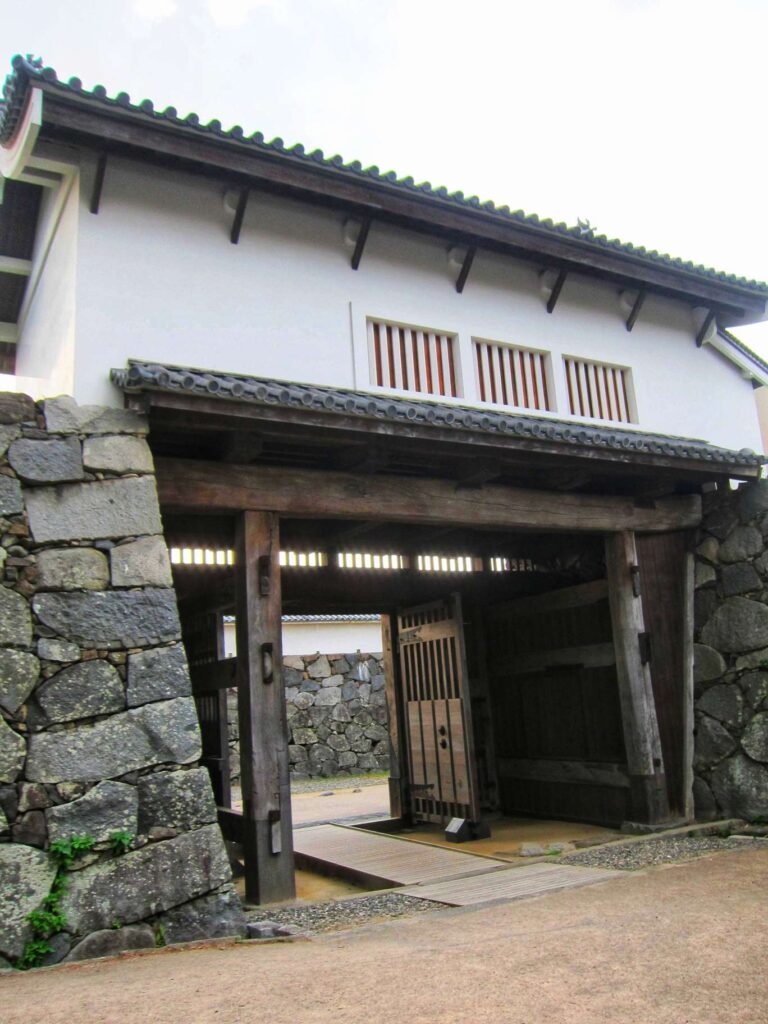
During peaceful times, the courtyard serves as entrance and exit for the lord and his officials as well as to host official events. It was burnt down due to a fire incident in 2000 but was fortunately, restored in 2008 to its current state. For the photography lovers, be sure take this opportunity to snap some lovely photos of the gate from the surrounding castle moats.
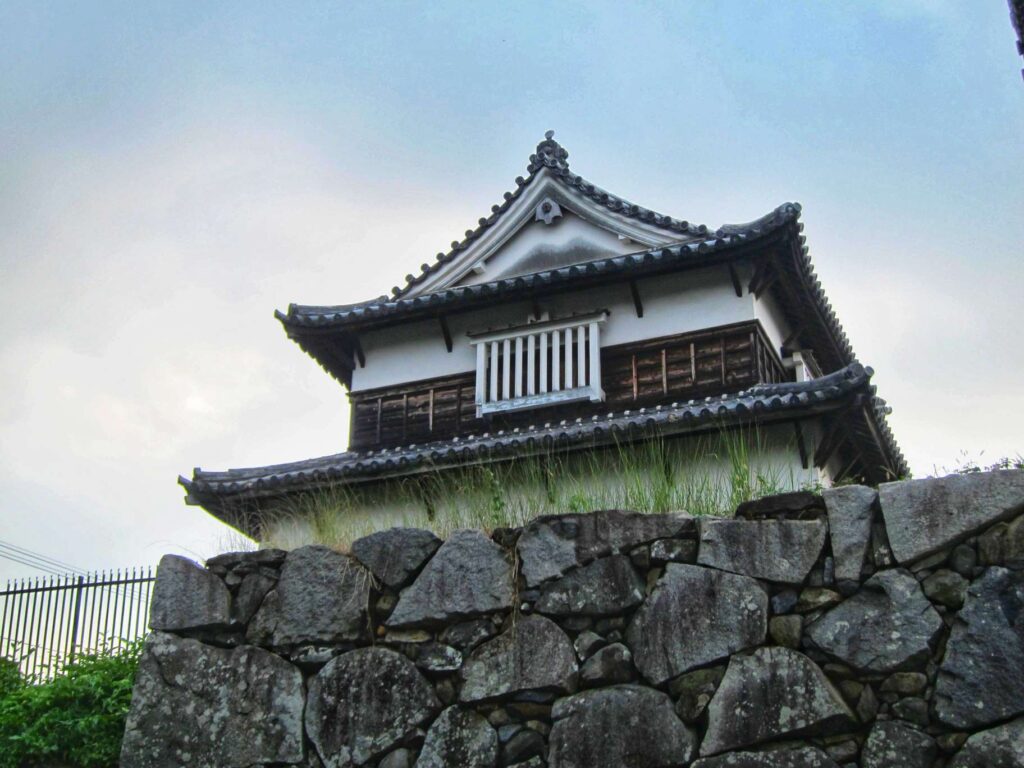
Najima-mon Gate
Another of the site’s important Tangible Cultural Property (有形文化財). Believe it or not, this gate was originally not one that belongs to the castle, but rather was a side gate from the Kuroda clan’s former residence, the Najima Castle (名島城). The castle was constructed along with the gate by the warlord, Kobayakawa Takakage (小早川隆景) in AD 1588. When Kuroda Nagamasa took over the castle later on, he realised however that the surrounding landscape was narrow and unsuitable for town development. Hence, he decided to move to present day Fukuoka instead.
Kuroda Nagamasa was also famously known for establishing his own elite soldier group, known as the 24 horsemen (Niju-yonki/二十四騎) whom were renowned for their bravery in war. When Kuroda Nagamasa shifted his home to Fukuoka Castle, he awarded the gate to one of the horsemen, Hayashi Naotoshi (林直利) for his meritorious service to the clan. Later, Naotoshi himself turned this gate into his own personal residence’s gate.
During the 19th century Meiji period (明治時代), the gate was almost relocated to Nagasaki (長崎) before it was purchased by a local politician called Hiraoke Kotaro (平岡浩太郎). And just like Naotoshi, he too utilised this gate as his personal residence’s entrance. In 1961, a construction company decided to transfer it to its present location, and turned it into a school gate for a junior high school. While the school was eventually relocated, the gate remains in its present location today as a monument of the castle’s former glory.
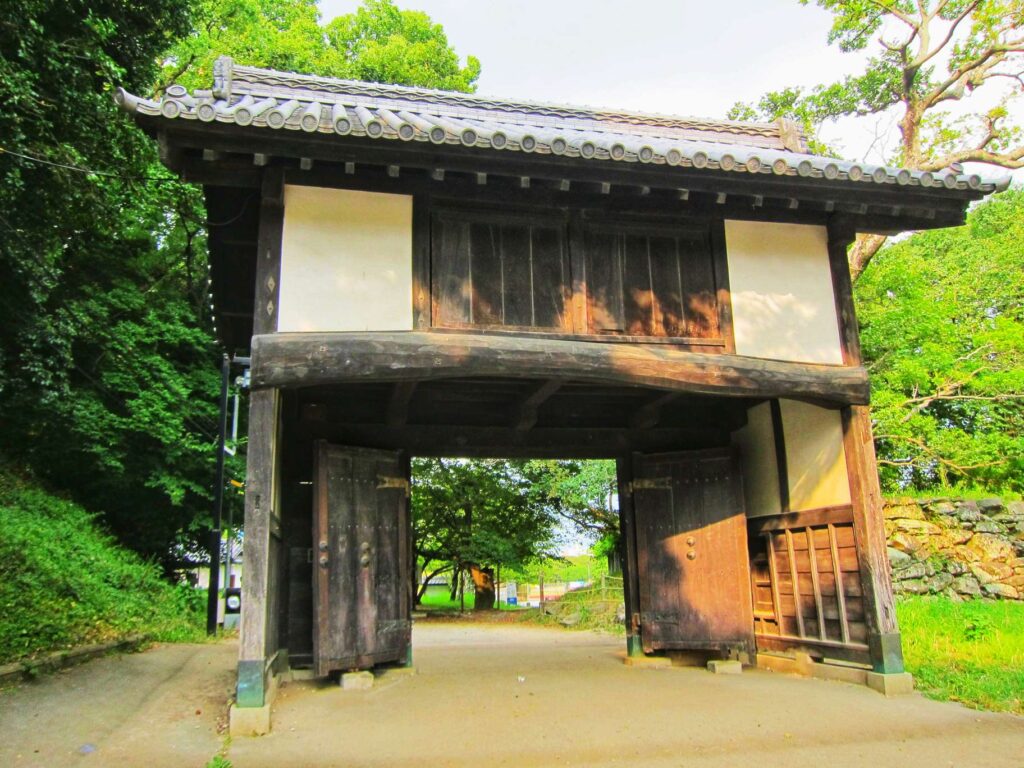
The Castle Walls
The main attractions of the castle ruins, and also the one that contributed to its famed reputation as a magnificent stone castle. These are called Ishigaki (石垣); ishi (石) while gaki (垣) means fence. The walls here specifically are designed by a samurai cum mason known as Noguchi Kazunari (野口一成), with a total length of 3km and some parts even exceed 10 metres in height.
Now this man is a master when it comes to building castle with stones; creating impressive foundations of various parts of the castle with stones, such as the main keep, the gates, towers and even the moats. In fact, the whole park itself is the castle ground itself; which I myself could not stop imagining the magnificence of the castle in its prime days. The mosses and the little shrubs on the stone foundations too add a little touch of nature which makes the scenery even more beautiful.
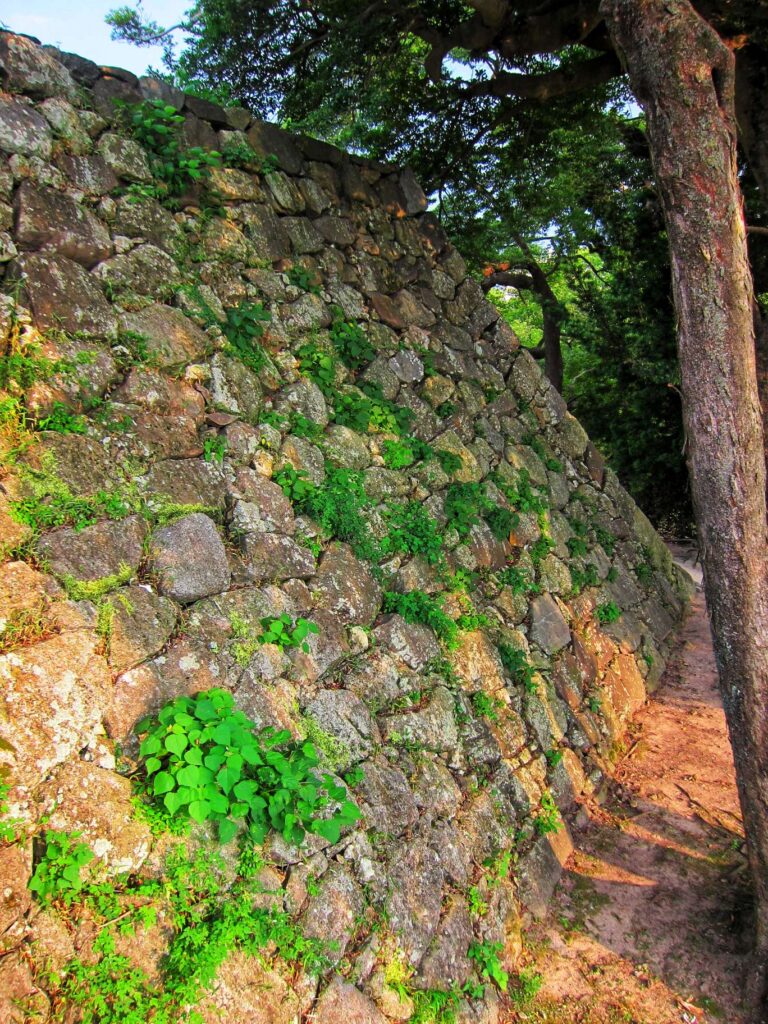
Take note of the castle walls supporting the castle turret below. Notice the sturdiness of stone foundations here; which is even more impressive given how each of the stones have a different shape. And yet, they stack up steadily until this day; providing support to the castle walls that protected the main keep.
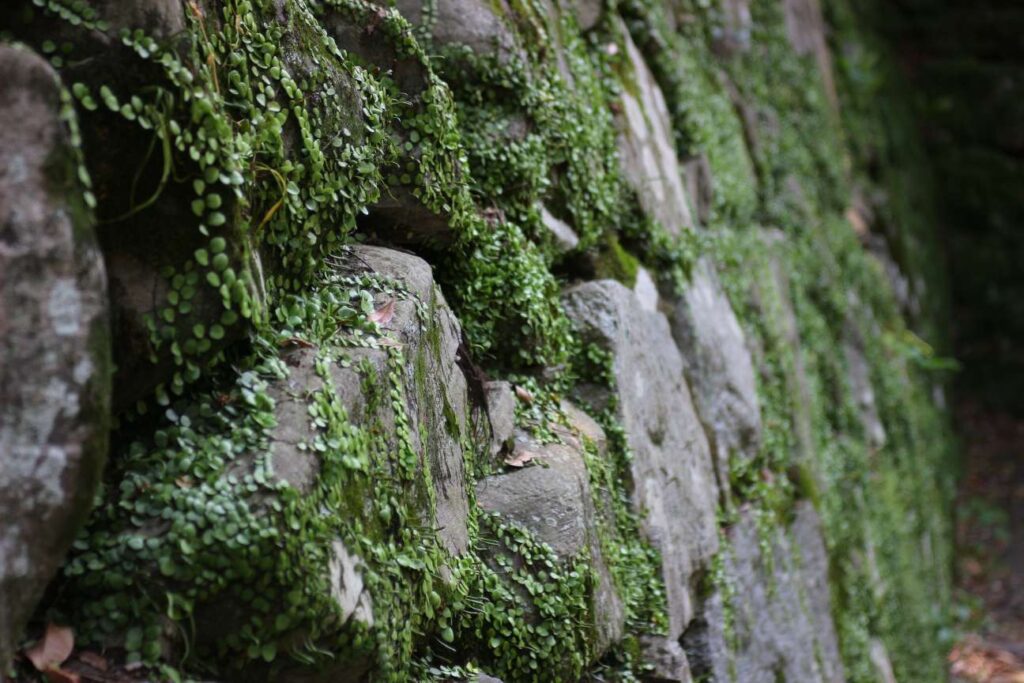
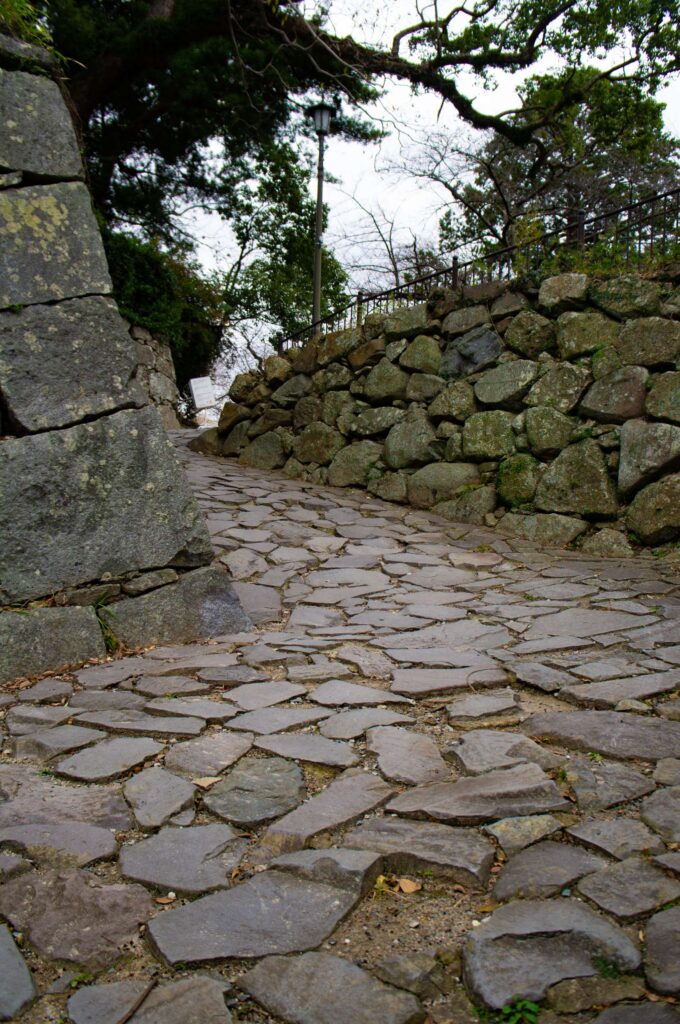
Enjoying the content so far? Be sure to subscribe as I will cover more fascinating castles like this in the future.
The Castle Turrets
The castle once had 47 turrets surrounding the complex as part of its defense. Today, only about 2 to 3 of them remain till this day. The Tamon Turret (多聞櫓/Tamon-Yagura) below is one of the few surviving turrets in this area. This turret was built during the Edo period and serves not just as a defense tower but also a warehouse in peace times. See the little windows along the turret? These are called ‘Teppo Hazama (鉄砲狭間)’ and the purpose was to allow soldiers to fire muskets or arrows towards the enemies. There are also the larger ones which were meant for throwing large rocks onto the enemies.
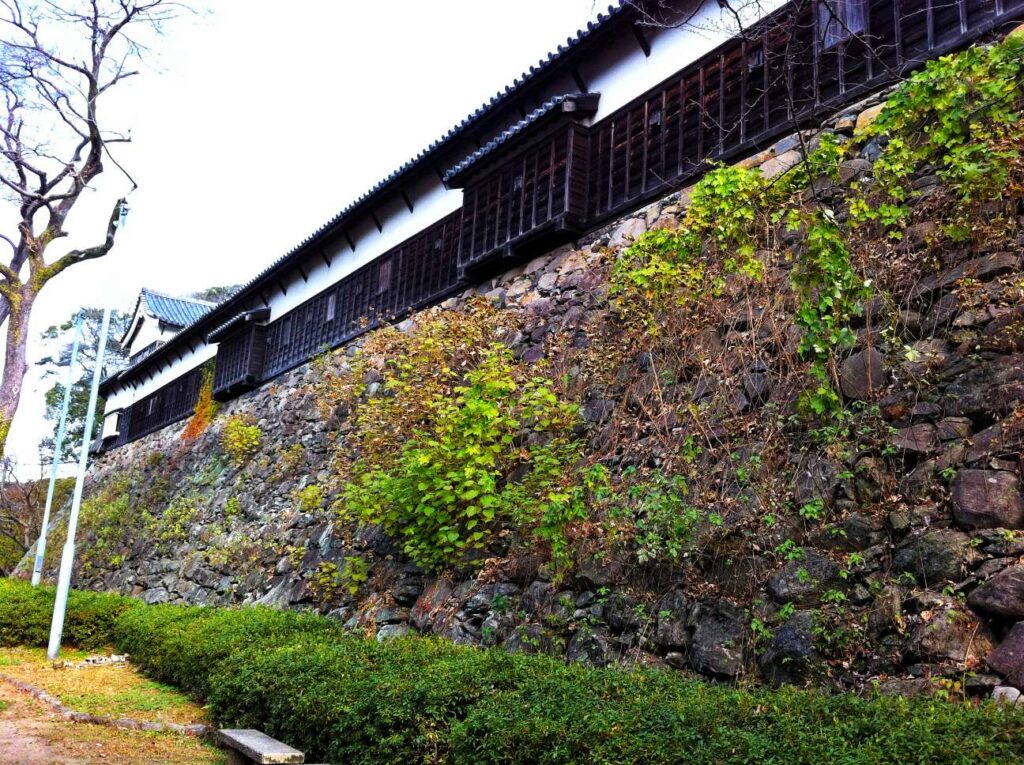
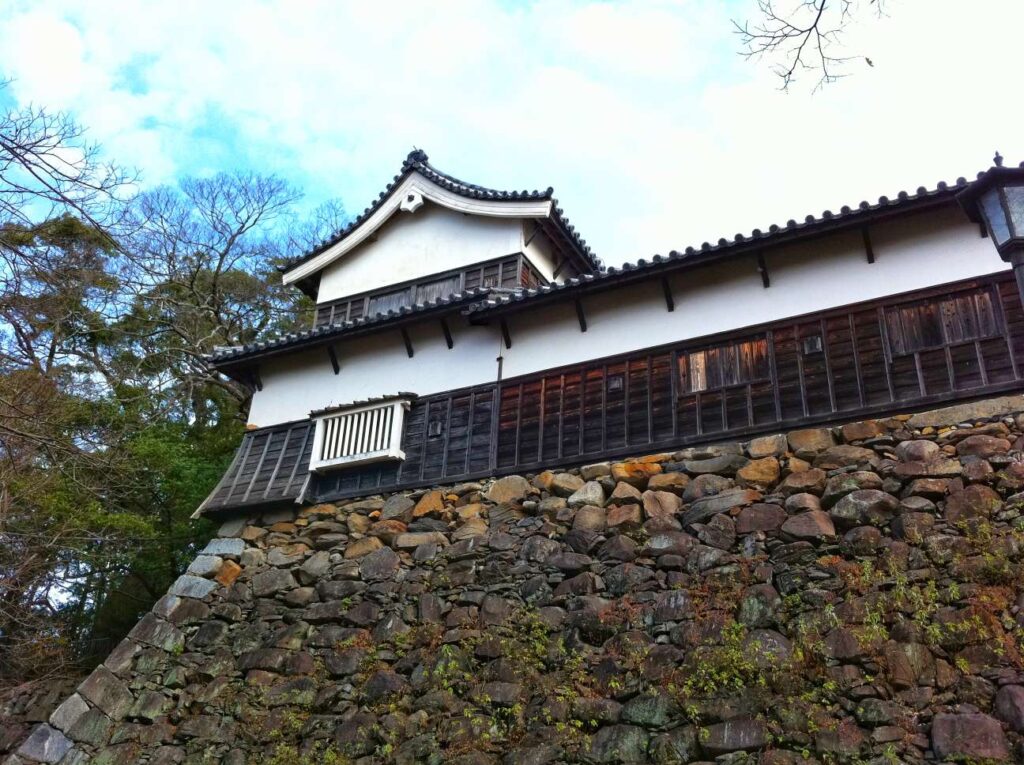
And then, there is the Kinen Turret (祈念櫓/Kinen-Yagura) which has an interesting background behind it. This tower was not built for defensive purposes, but rather for prayer purposes and is located on the north-eastern side of the castle grounds. And this is because in Ommyodo (陰陽道) or Japanese astrology, it is believe that the north-eastern side is the Demon Gate where by demons will enter and exit through this area.
I still personally enjoy the scenery here as it overlooks a large bocce ball court right next to it. Despite being in a city, there is still a certain level of tranquility that is maintained in the park which is part of the park’s charm.
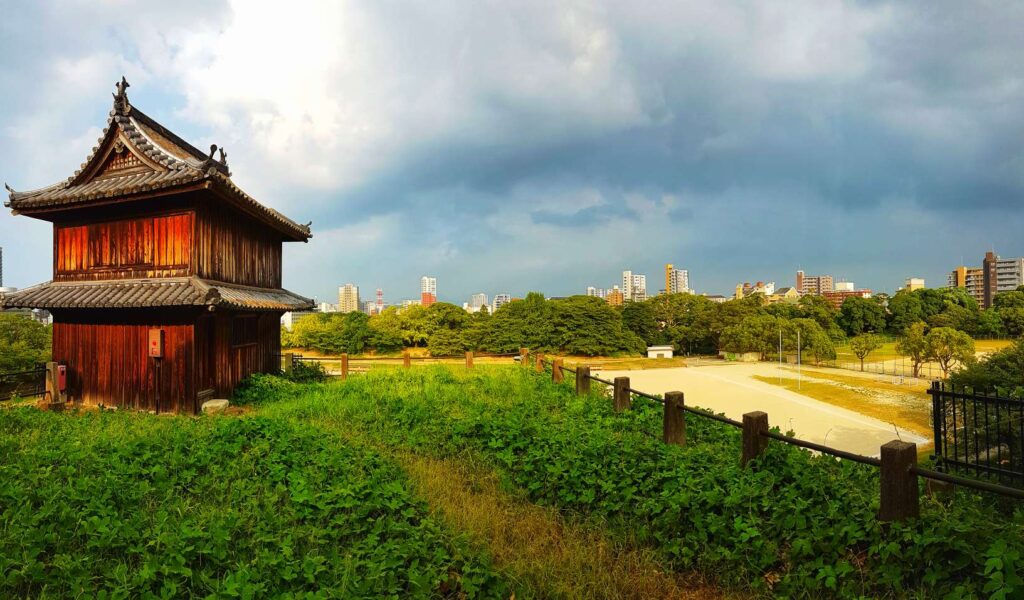
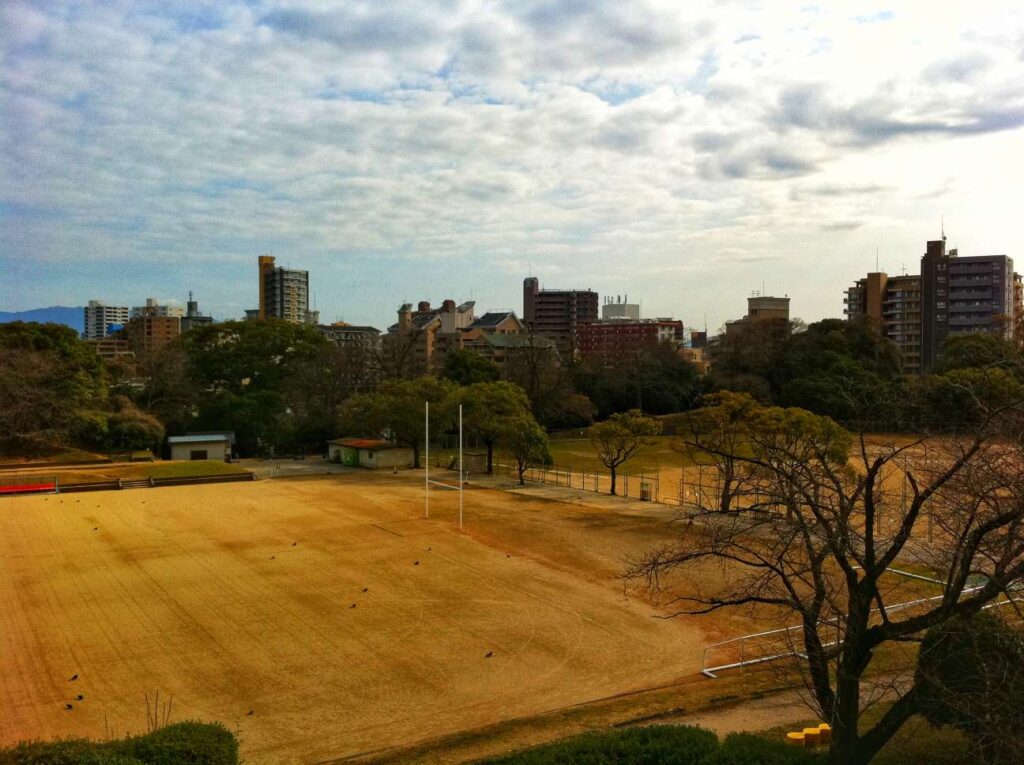
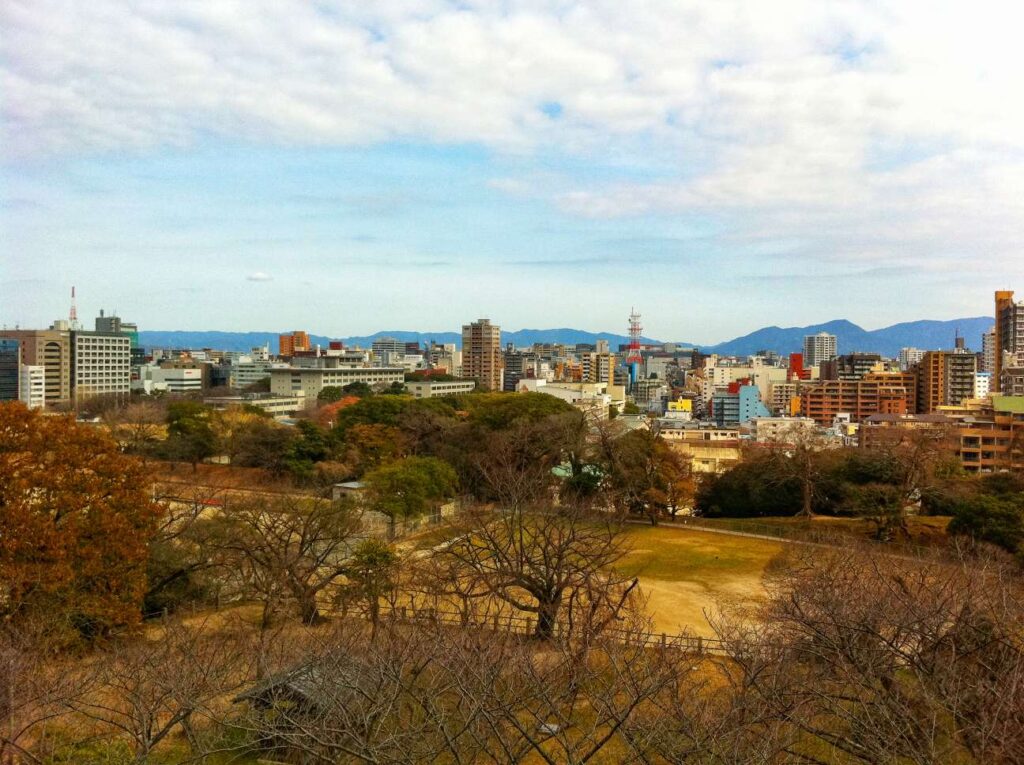
The Main Keep
While the main keep (Tenshu/天守) no longer exists today, one can still witness the stone foundations of the keep. The area presently serves as an observatory platform for scenery lovers seeking to capture stunning cityscape shots. And for a bonus, there are even benches here for you to sit just to enjoy the refreshing view while being greeted by the gentle breeze. Certainly, a refreshing experience after the taking the effort to explore the entire complex. And similarly to the Kinen Turret area, this spot is a popular cherry blossom viewing area among locals during spring.
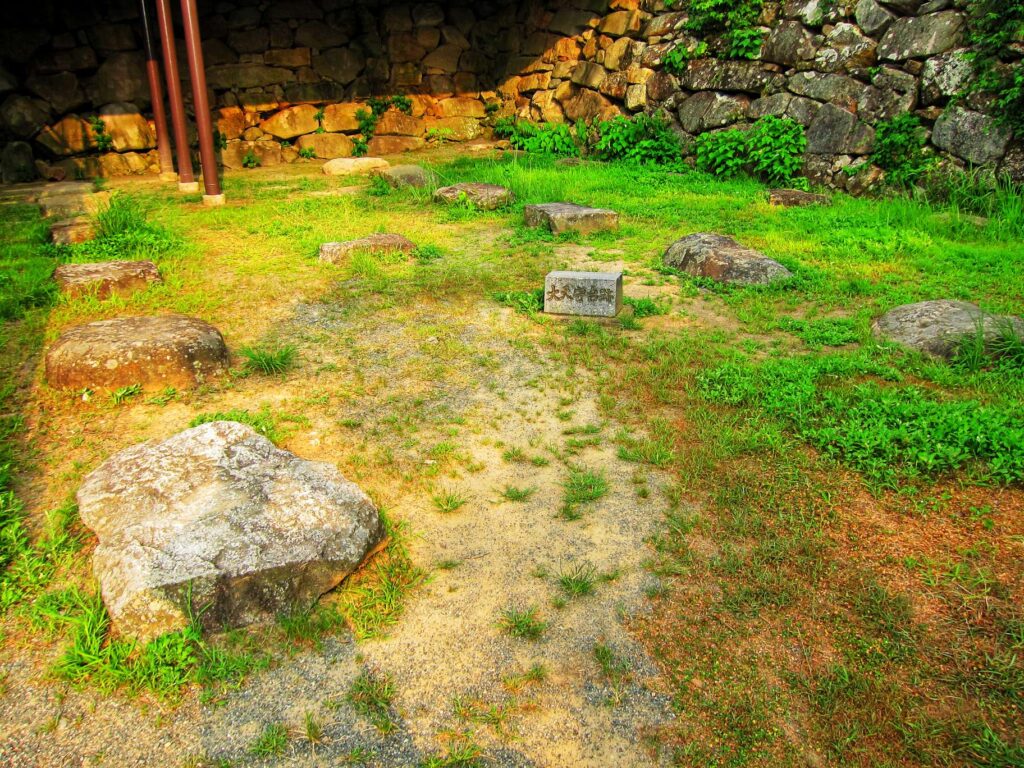
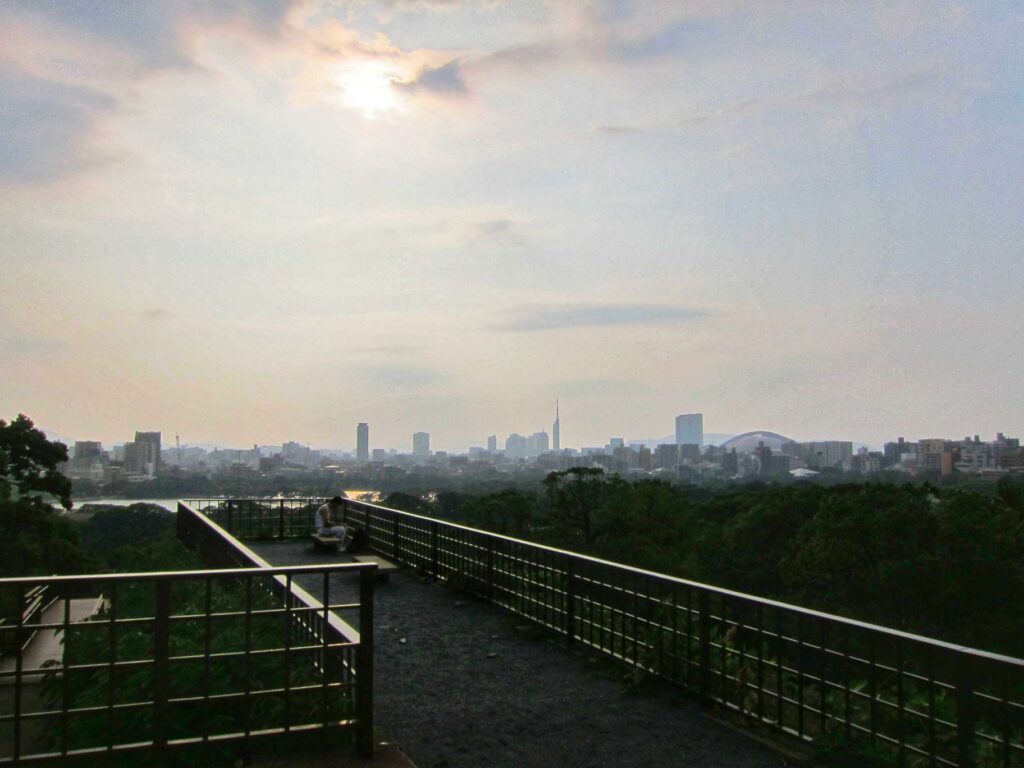
For an interesting fact, Fukuoka Castle was built as a Hirayama-jo (平山城) or simply known as a flatland-mountain castle. These type of castles can be easily distinguished from the fact of being built on top of a hill which makes it easier to defend the main keep. There are also the turrets, moats and the numerous walls surrounding the main keep to further enhance the defense. Pretty impressive engineering feat in my opinion; given how the workers have to transport the stones and other materials up the hill to construct such a once magnificent castle.
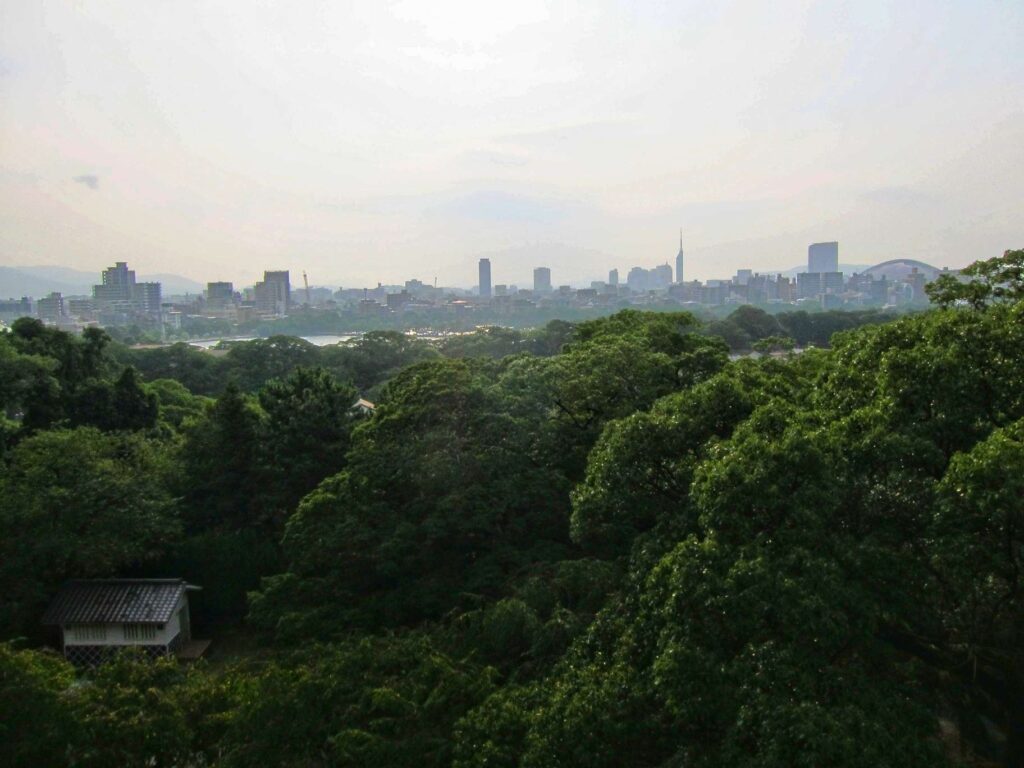
Also, before you leave, don’t forget to snap a panoramic photo of the entire scenery of the city from afar.
Korokan
While not an original structure of Fukuoka Castle, history lovers shouldn’t miss out on the Korokan (Kōrokan/Kourokan/鴻臚館) right next to the castle complex. Korokan is an ancient guesthouse that was constructed during the Asuka period (飛鳥時代) around the 6th century. The name itself was derived from the word Koro (鴻臚), which means to announce a visit from a diplomatic mission. It was once utilised to host diplomats and emissaries from the Tang dynasty in China and the Sillia kingdom (present day Korea). In fact, there are only 3 of these that existed in Japan.
In fact, the structure itself survived for several centuries before it was destroyed by fire in AD 1047 and later abandoned. Fortunately, the ruins were discovered in 1987 during a renovation of a stadium and the local government decided to construct a museum to preserve the ruins. Today, one can enter the museum to catch a glimpse of the stone foundation ruins that have survived more than a thousand years.
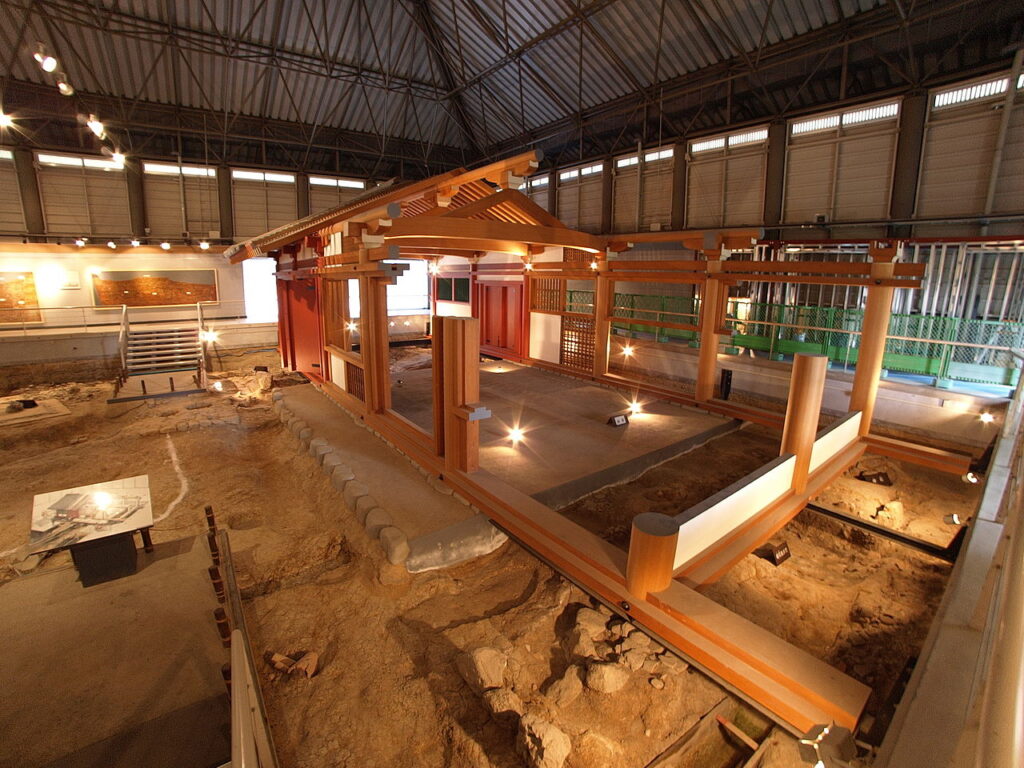
Cherry Blossoms Viewing at Fukuoka Castle
For the cherry blossom fans, don’t miss out on the annual Fukuoka Castle Sakura Festival (福岡城さくらまつり). The festival is held every year around the castle grounds from late-Mar to early-Apr as part of welcoming the cherry blossoms. There will be kitchen cars and stalls selling food and beverages for all to savour while enjoying the beauty of the cherry blossoms.
While spots such as the Kinen Turret and the main keep are fantastic points to look out for, one can also opt to walk along the pathways which are decorated completely by the dreamy flowers. In fact, watching the contrast between the ancient stone walls and the vibrant pinky cherry blossoms is certainly a mesmerising experience that will enlighten your travel experience.
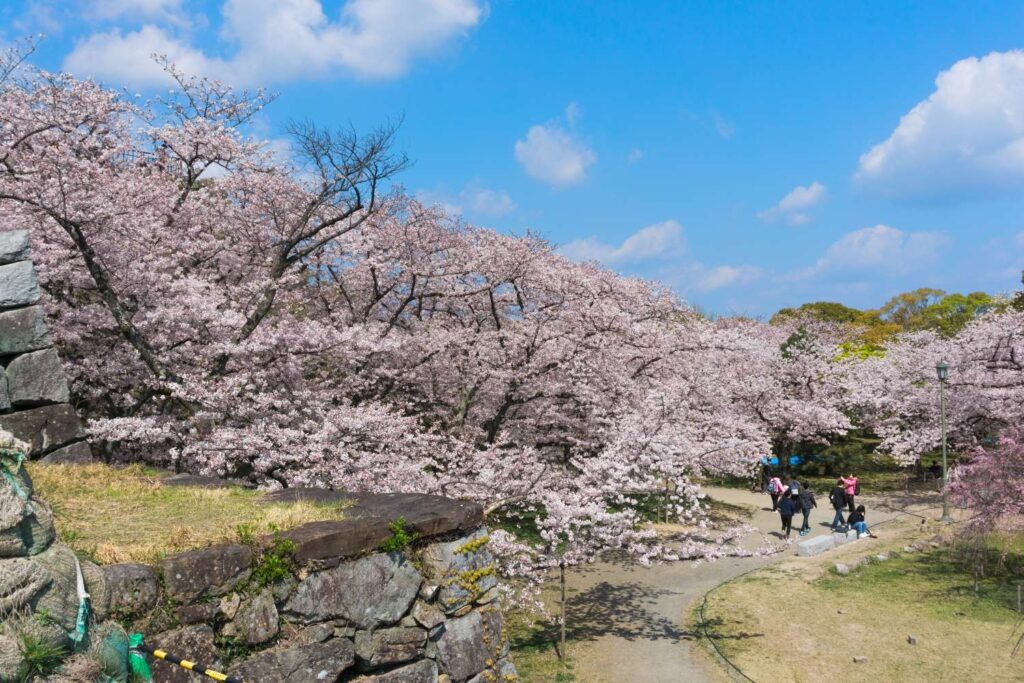
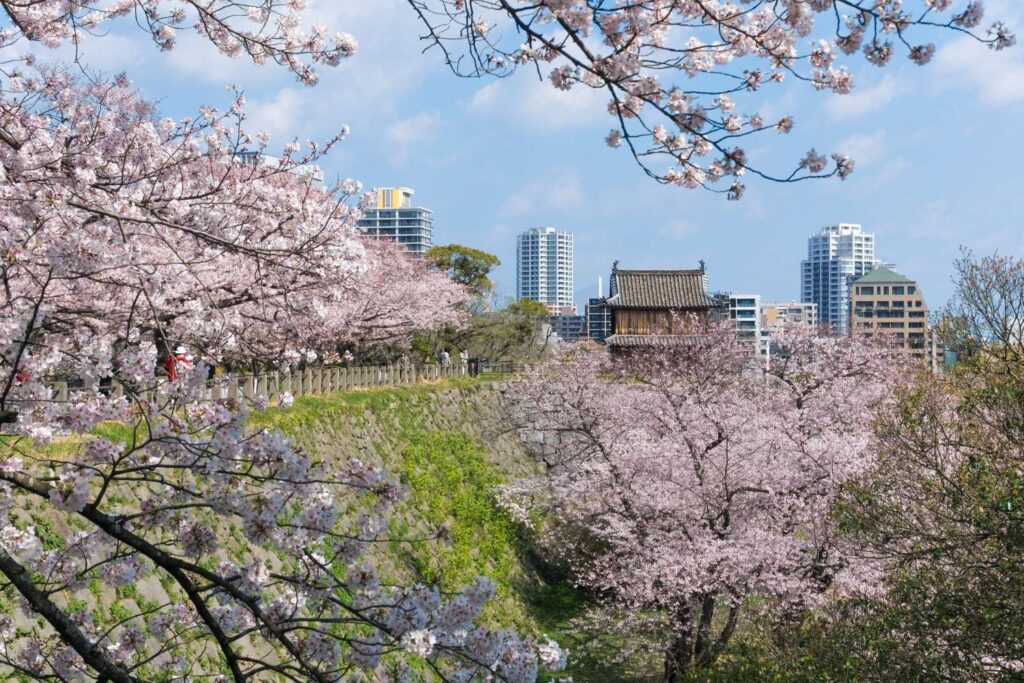
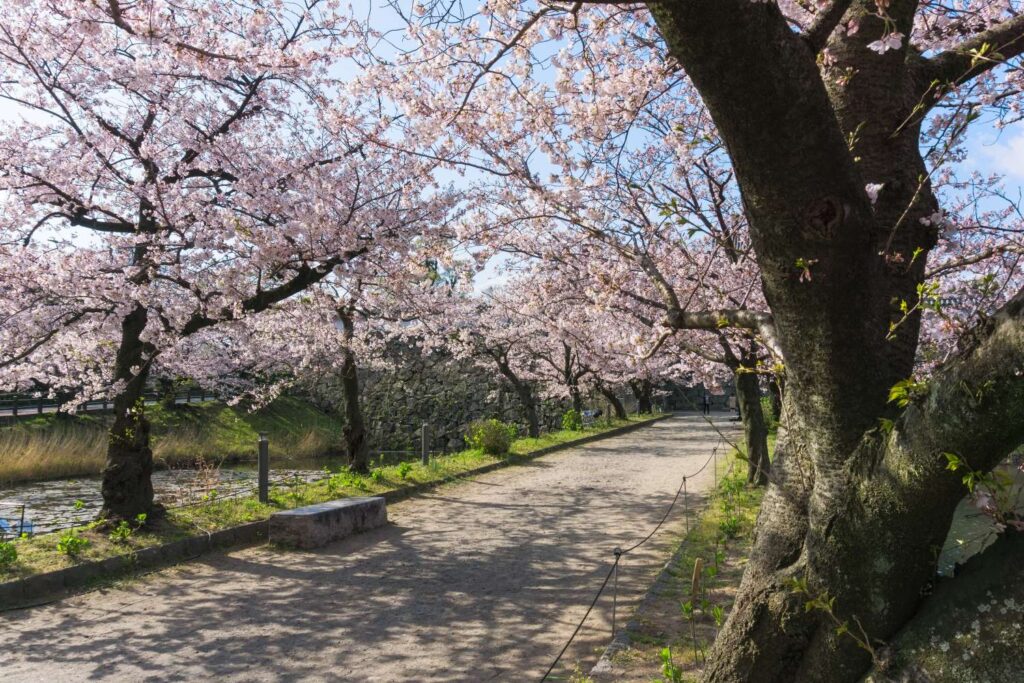
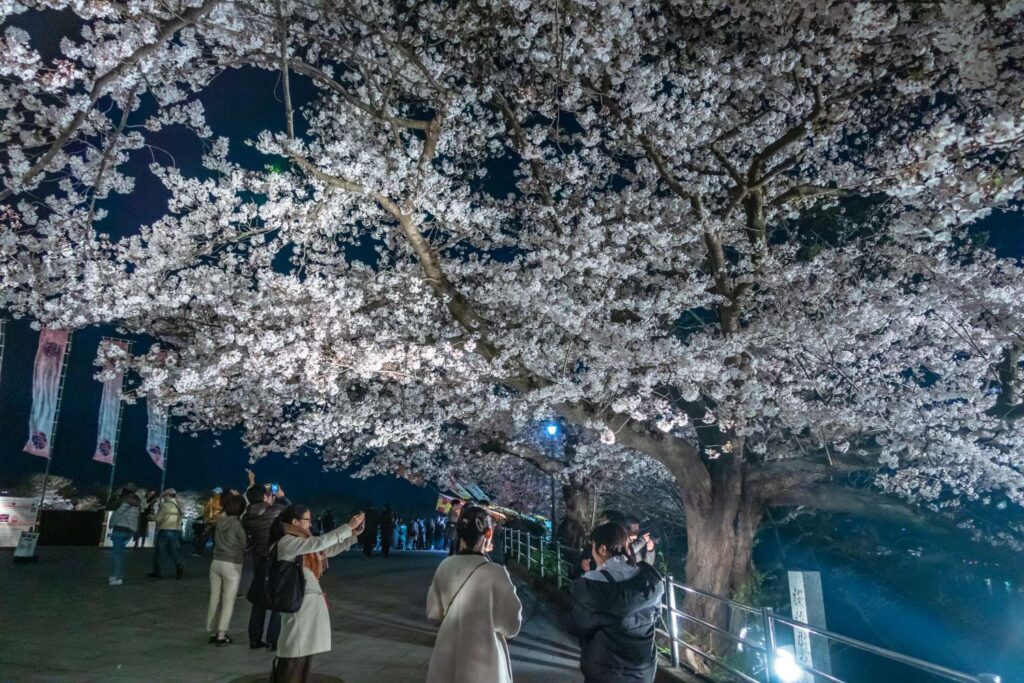
Getting There
By Train
Fukuoka Castle can be easily reached from both Hakata station (博多駅) and Tenjin station (天神駅). From Hakata station, take the Airport subway line for about 10 minutes (5 minutes from Tenjin station) and disembark at Ohori Park station (Ohorikoen/大濠公園). From there, both Fukuoka Castle and Ohori Park are within 10 minutes walking distance.
If you are from another city, board a train or shinkansen (新幹線) towards Hakata station (博多駅) of Fukuoka (福岡). I would suggest getting the JR Pass (JR パース), a handy all-you-can-ride pass on all JR lines especially if you are travelling in between cities of Japan. A great option for those visiting multiple cities and looking to save on transportation costs.
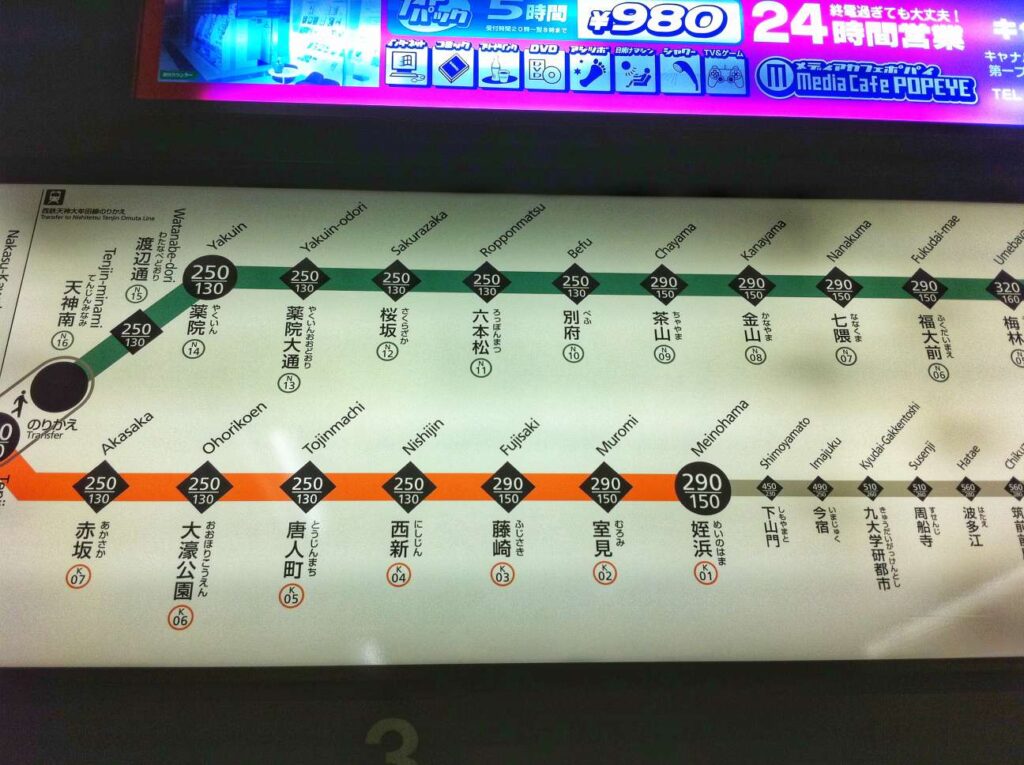
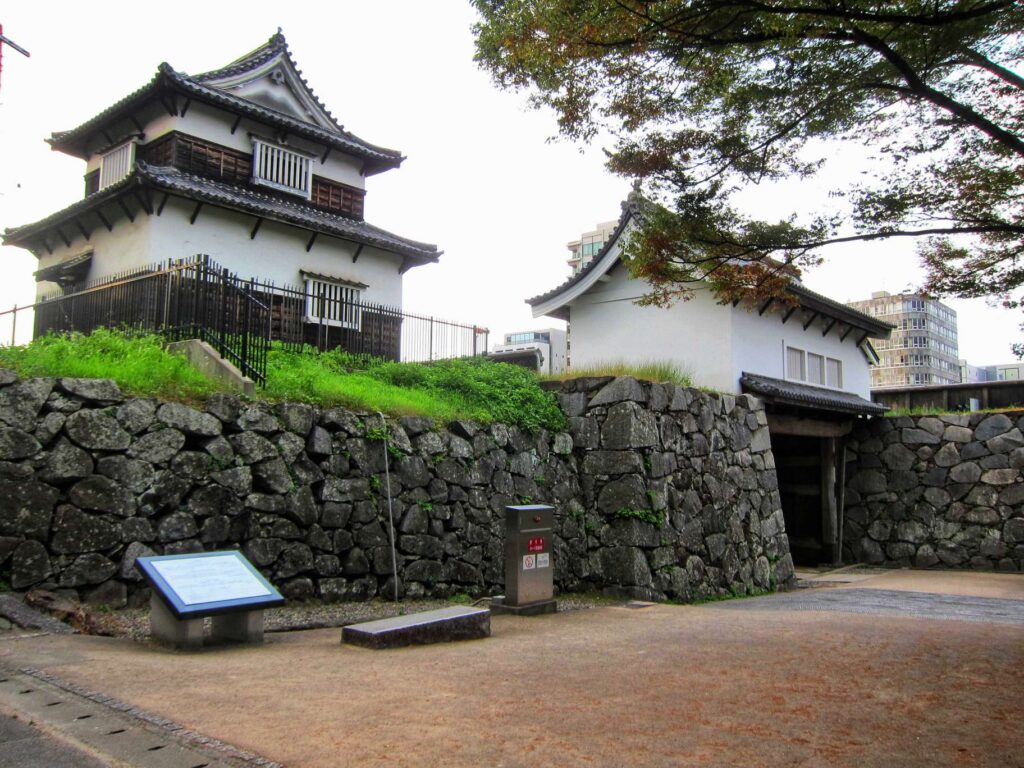
By Car
There are also parking slots available for those who are renting a car to travel across the country. There are at the north side of Ohori Park with the rates of 220 Yen for the first 2 hours and 170 Yen for every subsequent 30 minutes. While parking fees are generally pricy in Japan, renting a car however is one of the better options to explore the countryside as well as the lesser known parts of Japan.
If you are looking to venture into the countryside of Japan conveniently, consider renting a car from Tocoo. In fact, a friend of mine used Tocoo which he was able to drive around his family conveniently across various towns and cities of Japan. Are you unsure of getting the necessary license and familiarising with the rules of driving in Japan? Fret not as they also provide comprehensive and elaborate guides in their site on what you need to start your driving journey in Japan. Undoubtedly a great option for those seeking to add some lesser known destinations into their itinerary.
Overall Thoughts
If you are looking for a place to just chill and take a stroll, Fukuoka Castle is a great option to consider. It features a spacious park together with a small touch of history and ruins that makes it special in its own way. In fact, it is also a great destination to consider especially for those who eager to watch the cherry blossoms bloom.
Also, if you love to discover more hidden gems within Japan, be sure to subscribe as I will be sharing more fascinating gems of Japan in the near future.
Loving the content here?
Subscribe and get your free hidden gems in Japan bucket list here.


You May Also Like
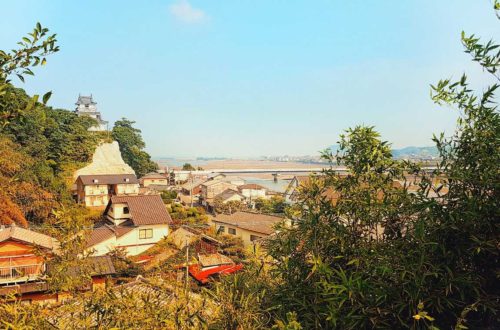
The History of Kitsuki Castle – Japan’s Smallest Castle
May 8, 2021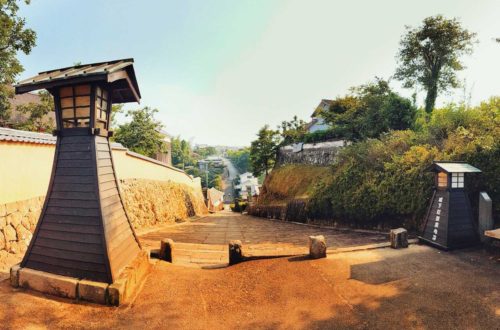
Kitsuki – A Comprehensive Travel Guide to the Sandwich Castle Town
May 3, 2021
